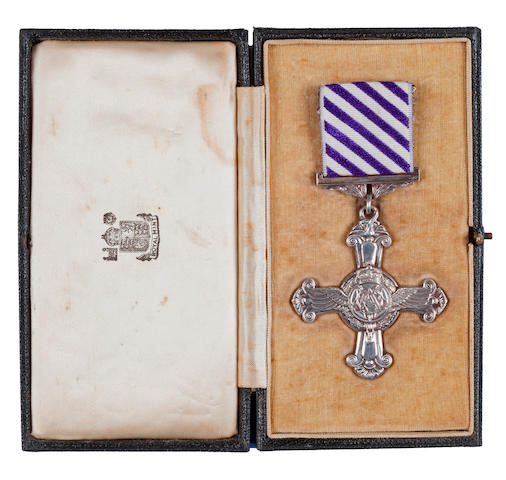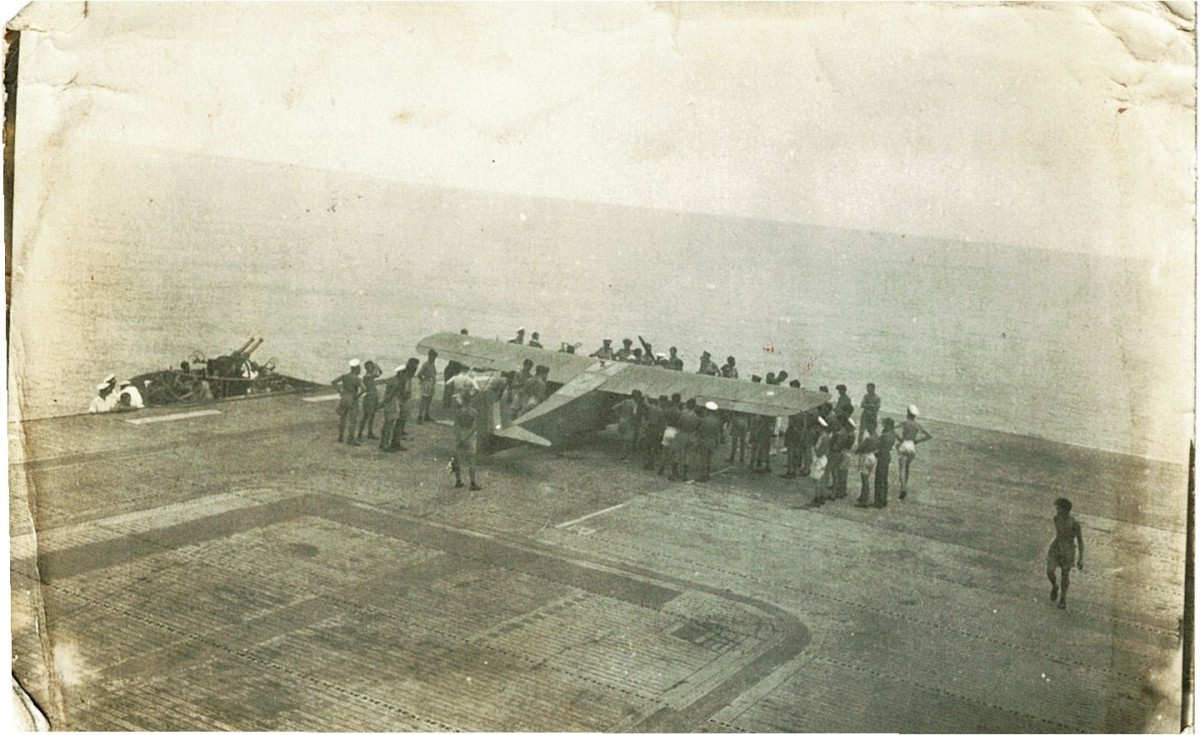Distinguished Flying Cross – Captain P J McLinden RA
The Royal Artillery Museum medal collection features over 10,000 medals and decorations and is considered one of the finest regimental collections in the British Army. It contains two Distinguished Flying Crosses (DFC), one awarded to Capt. Ian Kendal of 651 Squadron, in recognition of his service as an AOP pilot in Italy from November 1944 to May 1945 and the other to Captain P J McLinden RA.
The DFC is awarded for "an act or acts of valour, courage or devotion to duty whilst flying on active operations against the enemy", and therefore would normally have been more commonly awarded to RAF personnel. Captain Patrick Joseph “Black Mac” McLinden (235883) was a RA pilot with 656 AOP (Air Observation Post) Squadron RAF, who served in India and Burma from September 1943-1945, in support of General Slim’s 14th Army (“The Forgotten Army”).
AOP Squadrons employed RA Officers as pilots and a mixture of RA and RAF other ranks as ground crew and admin personnel, which made them unique amongst RAF Squadrons. As a RA pilot in an RAF Squadron, “Black Mac” was eligible to be awarded the DFC.
AOP Squadrons utilised Auster III and IV aircraft on AOP duties, which involved spotting and targeting duties for artillery units on the ground. On occasions, they were also called upon to provide fire support for Royal Navy warships involved in shore bombardment.
The McLinden medal group was kindly donated to our collection and consists of the DFC, 1939-45 Star, Burma Star, Defence Medal & War Medal 1939-45 with Mentioned-in-Despatches Oak Leaf. We also received his Log Books, maps and original photographs. The DFC is accompanied in its box by a note from Buckingham Palace, signed by King George VI, which reads as follows:
“I greatly regret that I am unable to give you personally the award which you have so well earned. I now send it to you with my congratulations and my best wishes for your future happiness. George R.I.”
The award of McLinden’s DFC was published in London Gazette on 15/11/1945 (5575) "In recognition of gallant and distinguished services in Burma." Examples of the activities “Black Mac” was engaged in while in Burma are contained in these extracts from 656 Sqn records.
“April 1944 - 8th (Belfast) Heavy AA Regiment, Gunner Tom Reynolds: "This spotter plane was on a landing strip and was surrounded entirely with four guns and also the command post, the predictors and everything else. The pilot was a big Scottish bloke with a black moustache (Captain "Black Mac" McLinden). His job was to take off from this strip, fly over the Mayu ridge, identify targets and then radio back to our command post whatever eight or distance was required. And he told us that on one occasion about eighty odd Japs were killed, lining up at their cookhouse for their bowls of rice. Another time he actually pinpointed a barge coming up river and we got direct hits on it.”
7/8 April 1944: C Flight diary: "Captain "Black Mac" McLinden carried out four Counter Battery sorties ....... but the Japs did not fire when we were up, which is most annoying (for us)."
May 1944 - Brahmaputra River: while withdrawing to Ranchi for the Monsoon season, three Austers were forced to land at a small village on the river bank. The first pilot, Capt. John Day, undershot, hit a bank, and landed in the villagers' lotus pool. The second, Capt. Ralph Hadley, overshot and went straight into the floods. The third pilot, Capt. McLinden, came in downwind, and landed safely.
December 1944 - C Flight had recommenced operations on 28 September, in the Arakan, where Capt. McLinden carried out a reconnaissance flight and a battery shoot from Cox's Bazaar.
Christmas Day 1944 - "Captain McLinden looked for three guns marked on captured Jap sketch, saw none, but he shot up trenches and did two registrations."
January 1945 - Akyab Island. Planned capture of Akyab Island - a joint-service operation involving the Royal Navy, RAF & Army. "48 hours before the assault was due it was discovered from observation by Capt. "Black Mac" McLinden that the enemy had left and the local inhabitants were waving white flags and had cleared an area to land on the main airstrip."
29 April 1945 – “Deck Landing practice on Ruler and Archer class escort carriers. On 4 May Capt. McLinden flew his Auster off HMS Stalker about 50 miles off Rangoon, with orders to head for the main airfield at Rangoon. As he and three other pilots flew over the city they saw, on the roof of the gaol, the famous message written by POWs: "Japs gone extract digit." They landed at Mingladon airfield and entered the city from the north in rickshaws, while the assaulting troops were still making their way up river from the sea.”
Our grateful thanks are due to the 656 Squadron Association and the Historic Army Aircraft Flight for their help with details of Capt. McLinden’s activities in Burma, and allowing us to access their squadron records.
https://656squadron.org/history/the-early-days-formation-india-and-burma/


.jpg)

